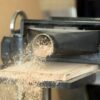Why Quality Sand Matters in RCC Construction in Guwahati
When it comes to building a strong, durable, and safe structure, Reinforced Cement Concrete (RCC) plays a pivotal role. RCC construction is the backbone of modern-day infrastructure in Guwahati—be it residential apartments, bridges over the Brahmaputra, or high-rise commercial towers. However, a crucial component often overlooked in RCC construction is quality sand.
Guwahati, being a region prone to heavy rainfall, soil erosion, and occasional seismic activity, demands construction materials of the highest quality—and sand is no exception. This blog explores why quality sand matters in RCC construction in Guwahati, how to identify good-quality sand, and the consequences of using substandard materials.
What is RCC and Why is Sand Used in It?
RCC (Reinforced Cement Concrete) is a composite material composed of concrete and steel reinforcement bars (rebars). The concrete part includes cement, coarse aggregates (like gravel), fine aggregates (primarily sand), and water. Sand acts as a filler and binding medium that ensures proper spacing between coarse aggregates and binds them when mixed with cement and water.
In RCC construction, sand contributes to:
- Filling voids between coarse aggregates
- Providing a smooth finish
- Enhancing workability
- Preventing segregation and bleeding
- Improving compressive strength of concrete
Thus, the quality of sand directly affects the integrity of RCC structures.
Why Sand Quality Is Crucial in Guwahati’s Construction Environment
Guwahati has unique geographical and climatic challenges:
- Heavy monsoons and flash floods
- Soil liquefaction risks in low-lying areas
- Earthquake-prone zones (Seismic Zone V)
- High humidity and water table
These conditions make it vital to use top-grade construction materials, particularly sand, as it directly impacts the strength and durability of concrete.
Types of Sand Used in Construction
Before diving into the importance of quality, it’s essential to understand the types of sand typically used in Guwahati:
- River Sand
- Commonly used due to local availability from rivers like Brahmaputra and its tributaries.
- Fine, rounded particles.
- Naturally occurring and contains minimal clay or silt.
- Manufactured Sand (M-Sand)
- Produced by crushing hard granite stones.
- Angular in shape and better for concrete bonding.
- Increasingly used due to environmental concerns over river sand mining.
- Pit Sand
- Sourced from deep pits and not commonly used in Guwahati.
- Coarse and sharp particles.
- Contains clay and organic matter.
- Desert Sand / Sea Sand
- Not suitable due to high salt content and fine grain size.
In Guwahati, river sand and M-sand are predominantly used in RCC construction.
How Poor-Quality Sand Affects RCC Structures
1. Reduced Strength and Load-Bearing Capacity
Impurities like silt, clay, and organic matter in sand can interfere with the bonding between cement and aggregates. This results in weaker concrete, which can crack, crumble, or collapse under pressure.
2. Corrosion of Reinforcement Bars
In RCC, rebars are embedded in concrete. Poor-quality sand containing chlorides or sulfates (especially from sea sand or contaminated river sand) can lead to corrosion of steel within the concrete. This drastically reduces the lifespan of the structure.
3. Water Seepage and Leakage
Substandard sand fails to create a dense matrix within concrete, leading to porosity and water seepage. In Guwahati’s monsoon-prone environment, this can lead to moisture damage, mold growth, and structural weakening.
4. Compromised Durability in Seismic Zones
Given that Guwahati falls in an earthquake-prone region, RCC buildings must withstand dynamic loads. Weak concrete due to bad sand usage can fail during seismic activities.
5. Construction Delays and Cost Overruns
Bad sand affects the workability of concrete. It becomes hard to mix, spread, and cure properly, resulting in labor inefficiencies and increased costs for rework or material replacement.
How to Identify Good Quality Sand in Guwahati
Whether you’re a contractor, builder, or homeowner in Guwahati, knowing how to identify quality sand is crucial.
Color and Texture
- Good sand is clean, light brown, and free from impurities.
- Texture should be fine to moderately coarse, not powdery.
Silt Content Test
- Take a sample of sand in a clear bottle, add water, and shake it.
- Let it settle for 3 hours.
- Silt should not exceed 8% of the total volume.
Salt Content Test
- Taste a small amount of sand (not recommended frequently).
- If it’s salty, it has high chloride content—not suitable for RCC.
Grain Size Distribution
- A mix of different particle sizes (well-graded sand) provides better compaction.
No Organic Impurities
- Check for decaying matter like twigs, leaves, or black-colored particles.
Laboratory Testing
- Sand should meet IS 383 standards as per the Bureau of Indian Standards (BIS).
- In Guwahati, several local labs can perform quality checks.
Sources of Quality Sand in Guwahati
In recent years, Guwahati has seen stricter regulations on sand mining. It’s important to buy from authorized dealers and licensed quarries. Some key sand sources and suppliers include:
- Brahmaputra River banks (licensed zones only)
- M-Sand manufacturing units in Sonapur, Jalukbari, and NH37 belt
- Distributors associated with branded construction companies
Look for certified suppliers who can provide lab reports or sand grade specifications.
Tips for Builders & Homeowners in Guwahati
- Never prioritize cost over quality when it comes to sand.
- Source locally but verify authenticity and compliance.
- Conduct field tests before placing bulk orders.
- Always store sand in dry, covered areas to avoid contamination from rain or debris.
- If unsure, hire a construction material consultant or civil engineer to guide you.
Case Study: Sand Quality Failure in RCC Construction – A Real Example from Guwahati
In 2022, a mid-rise residential complex in the Beltola area reported cracks and water seepage within 8 months of completion. Upon investigation, it was found that the contractor used unwashed, low-grade sand from an unauthorized riverbed.
The result:
- Chipped plaster and loose tiles
- Moisture ingress during monsoon
- Partial reconstruction costs exceeding ₹15 lakhs
This underscores the financial and safety risks associated with poor-quality sand usage.
Conclusion
In Guwahati’s fast-growing real estate and infrastructure sector, the importance of quality sand in RCC construction cannot be overstated. From durability and safety to cost-efficiency and environmental resilience, high-grade sand ensures your structure stands the test of time.
Whether you’re building a home, an office, or a multi-story project, invest in verified, high-quality sand. It’s not just a material—it’s the foundation of your construction’s longevity and performance.







Add comment